Welcome to our exciting blog exploring the revolutionary changes in French agriculture through the widespread adoption of greenhouse farming. In recent years, this innovative method has taken the country by storm, transforming traditional agricultural practices and enhancing crop production in ways never seen before.
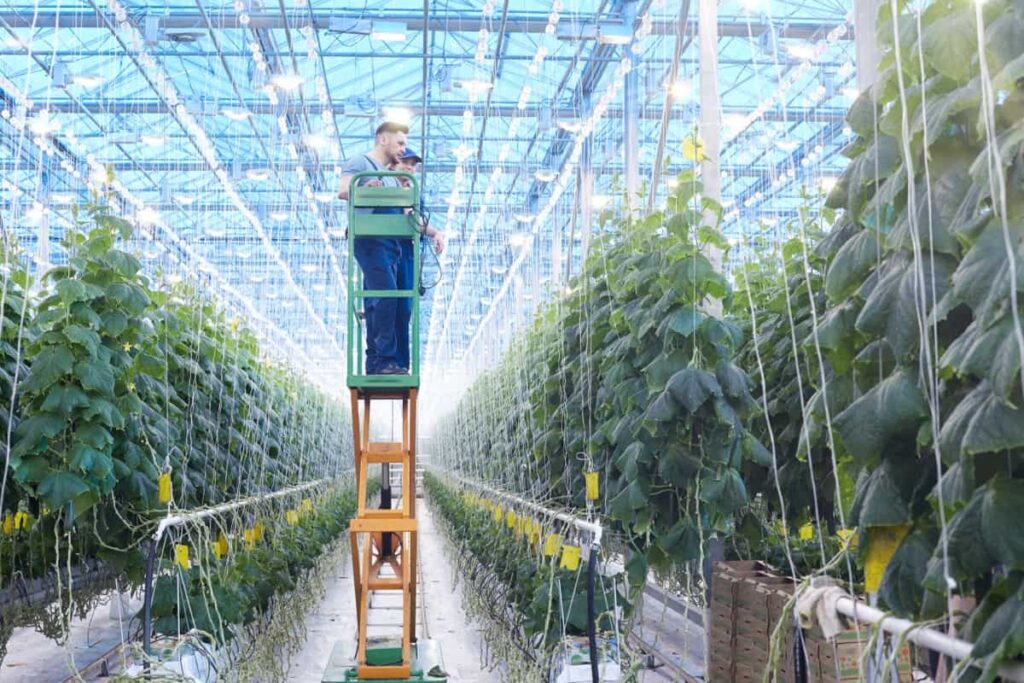
With precise climate control and optimized growing conditions, French farmers can grow a diverse range of crops year-round, increasing yields and reducing the reliance on unpredictable weather patterns. Join us as we delve into accurate data and real-life success stories, showcasing how greenhouse farming shapes the future of agriculture in France.
Greenhouse Farming in France
What is French Greenhouse Farming?
French Greenhouse Farming is a modern agricultural technique where crops are grown in controlled environments, providing ideal conditions for year-round cultivation. Its history traces back to the late 19th century when the concept of using glass structures for crop cultivation emerged in France. However, in the mid-20th century, greenhouse farming gained significant popularity in the country. Today, France is a leader in greenhouse farming, with various crops grown under controlled conditions.
Advanced technologies, such as automated climate control, hydroponics, and energy-efficient systems, have revolutionized the sector. This approach ensures higher yields, reduced water consumption, and minimized environmental impact compared to traditional open-field farming. The greenhouse farming industry in France has seen steady growth due to increased demand for fresh produce, regardless of seasonal limitations. Furthermore, it has contributed to job creation, sustainable food production, and the promotion of local agriculture.
Types of Greenhouses in France
Greenhouse farming has been a significant aspect of France’s agricultural landscape for centuries, using technology to optimize crop growth and address climatic challenges. The evolution of greenhouses in France is a fascinating story of innovation and sustainability. Various greenhouse designs include traditional hoop houses, tunnel greenhouses, ridge-and-furrow structures, and high-tech solar greenhouses.
In case you missed it: Revolutionizing Agriculture: Exploring Morroco Greenhouse Farming
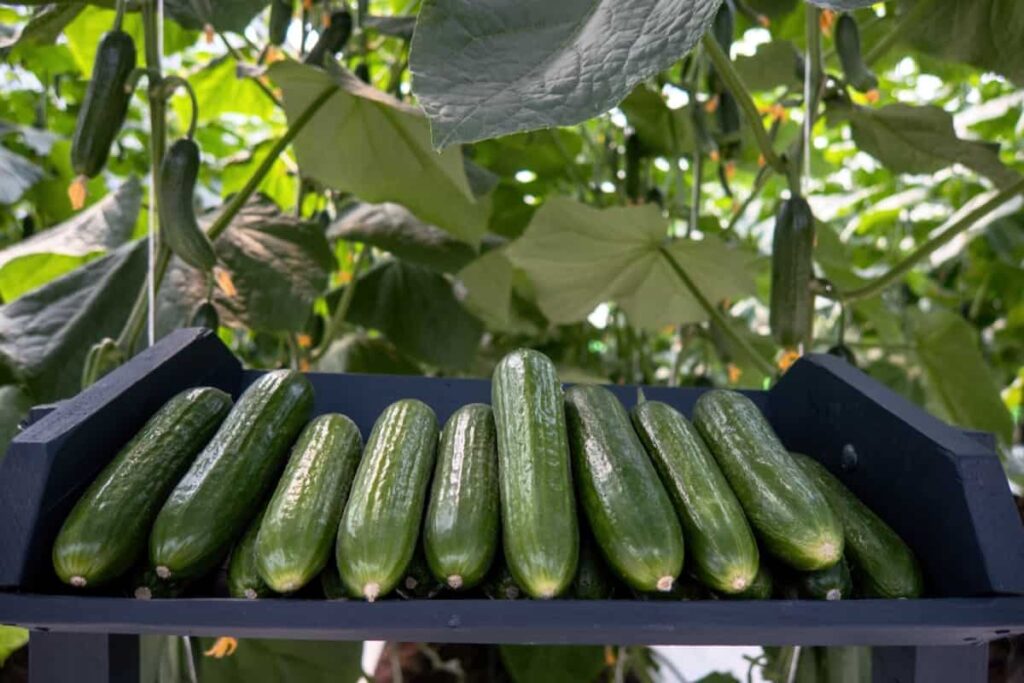
These greenhouses offer unique advantages such as weather protection, pest control, and temperature and humidity regulation. Common materials used in greenhouses in France include glass, polycarbonate, and polyethylene. Glass greenhouses provide excellent light transmission, while polycarbonate structures offer superior insulation and cost-effective polyethylene-covered structures. The roots of greenhouse cultivation in France can be traced back to the 17th century, when “orangeries” were used to grow citrus fruits and exotic plants for nobility.
Greenhouse Farming Techniques in France
Greenhouse farming in France has witnessed a remarkable surge, bringing forth innovative agricultural practices. These structures enable year-round cultivation through controlled environments, optimizing crop yield and mitigating environmental impacts.
Greenhouse Areas and Crop Diversity: France boasts over 26,000 hectares of greenhouse cultivation, with a diverse array of crops grown. From tomatoes and cucumbers to lettuce and strawberries, these greenhouses have become hubs for producing high-quality, fresh produce.
Advanced Climate Control: Cutting-edge technologies, including automated systems and precision climate control, ensure optimal growing conditions. This maintains ideal temperature, humidity, and light levels, accelerating plant growth and consistent yields.
Sustainable Energy Solutions: Adopting renewable energy sources is gaining momentum within the greenhouse industry. Solar panels and geothermal systems are being incorporated to reduce carbon footprints and enhance energy efficiency.
Water Management Strategies: With an increasing focus on water conservation, greenhouse farmers in France are implementing drip irrigation and recycling systems. These techniques minimize water usage while promoting eco-friendly practices.
Integrated Pest Management (IPM): To reduce reliance on chemical pesticides, IPM techniques are widely embraced. Beneficial insects and biological controls are utilized to manage pests, safeguarding both crops and the environment.
Vertical Farming Innovations: Vertical farming is gaining traction, particularly in urban areas with limited space. This technique utilizes vertical stacks to maximize land use, presenting a promising future for urban agriculture.
Sustainable Practices in France Greenhouse Farming
French greenhouse farmers prioritize soil health through composting and organic matter integration, ensuring proper pH, moisture, and nutrient levels for optimal plant growth. They use efficient irrigation systems like drip and hydroponics, minimizing water usage and runoff. Greenhouses are equipped with energy-efficient technologies like LED lighting and solar panels, reducing electricity consumption and promoting sustainability.
Integrated Pest Management (IPM) strategies control pests and diseases using beneficial insects, natural predators, and biopesticides. Crop selection optimizes resources and enhances yields by selecting native or regionally adapted plants. Crop rotation practices maintain soil fertility and minimize pest and disease buildup, ensuring sustainable yields.
Climate Control Systems for France’s Greenhouses
Greenhouse farming in France is popular due to its controlled environment for optimal crop growth. Climate control systems are crucial in managing greenhouse conditions to maximize yields. These systems regulate temperature, humidity, ventilation, air circulation, light management, CO2 enrichment, and water management. Temperature control systems maintain an average temperature range of 20-30°C, promoting steady growth and reducing stress-related issues.
In case you missed it: Hydroponic Saffron Farming: Cultivating Premium Saffron through Modern Techniques
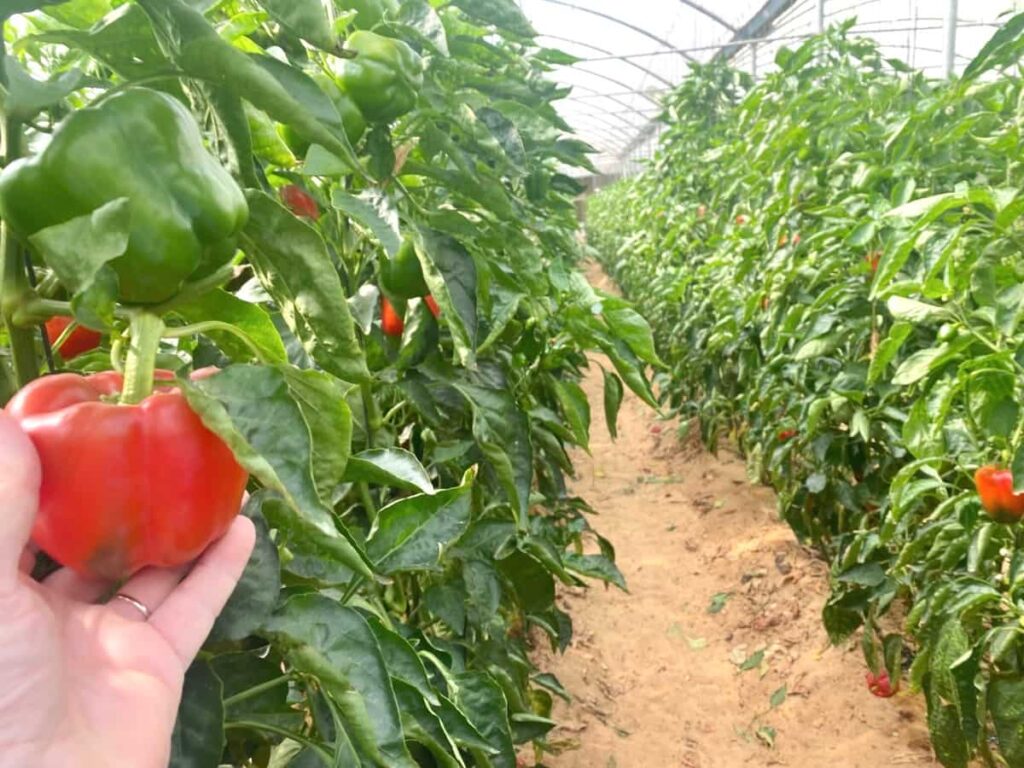
Humidity control systems manage humidity levels between 50-70%, ensuring sufficient moisture without risking mold or fungal growth. Smart shading and diffusion techniques optimize light distribution, enhancing photosynthesis and crop development. Integrated with climate control, automated irrigation systems ensure precise water delivery, reducing water wastage and nutrient uptake.
Crop Selection for French Greenhouse Farming
Tomatoes: Tomatoes are the indisputable stars of French greenhouse farming, accounting for approximately 60% of the total greenhouse crop area. Their adaptability to controlled environments and high market demand makes them a profitable choice for farmers.
Cucumbers: Cucumbers rank second in popularity, occupying nearly 25% of the greenhouse cultivation area. Their fast growth, consistent demand, and versatility in French cuisine make them a sought-after crop.
Bell Peppers: Bell peppers hold the third position, constituting around 10% of the total greenhouse area. Their vibrant colors, culinary applications, and nutritional benefits contribute to their steady presence in the market.
Lettuce: Lettuce, a staple in salads and sandwiches, occupies nearly 5% of the greenhouse crop area. Its quick growth cycle and continuous demand make it an economically viable choice for farmers.
Strawberries: Strawberries are gaining momentum in greenhouse farming, with around 4% of the total area dedicated to their cultivation. Their delightful flavor and year-round popularity add value to French greenhouse produce.
Herbs (Basil, Mint, etc.): Herbs are cultivated in approximately 3% of the greenhouse area due to their culinary importance and niche markets. The steady demand for fresh herbs in the culinary industry ensures a stable income for growers.
Others (Eggplants, Zucchinis, etc.): Remaining crops, including eggplants, zucchinis, and other specialty vegetables, collectively occupy about 3% of the greenhouse area. Although their relatively small shares, their cultivation caters to specific consumer preferences and niche markets.
Pest and Disease Management in France Greenhouse Farms
Though advanced in technology and cultivation practices, French greenhouse farms still encounter various pests and diseases that can harm crops. Farmers must implement effective pest and disease management strategies to ensure sustainable and thriving agriculture.
- Aphids: These small, sap-sucking insects are a common greenhouse pest affecting many crops. Farmers can introduce beneficial insects like ladybugs or employ organic insecticides to manage aphids.
- Whiteflies: Whiteflies cause damage by feeding on plant sap and transmitting diseases. Yellow sticky traps and insecticidal soaps are practical management tools for controlling whitefly populations.
- Thrips: Thrips feed on plant tissues, causing stippling and curling of leaves. Monitoring with blue sticky traps and introducing predatory mites effectively manage thrips.
- Spider Mites: These tiny pests thrive in dry conditions and can cause significant damage. Regular misting and releasing predatory mites or insects are effective control methods.
- Powdery Mildew: This fungal disease appears as white powdery patches on leaves, stunting plant growth. Proper ventilation and the use of fungicides can manage powdery mildew.
- Botrytis (Gray Mold): Botrytis attacks flowers and fruits, leading to decay. Good hygiene practices, like removing infected plant parts and maintaining proper humidity, help control the disease.
- Fusarium Wilt: Caused by a soil-borne fungus, Fusarium wilt affects the vascular system of plants. Crop rotation and using disease-resistant varieties are preventive measures against this disease.
- Pythium Root Rot: This waterborne disease causes root decay and wilting. Implementing well-drained soil and avoiding overwatering can reduce Pythium root rot incidence.
In case you missed it: How to Grow Jalapeno Peppers from Seed: A Step-by-Step Guide for Types, Seed Germination, and Planting
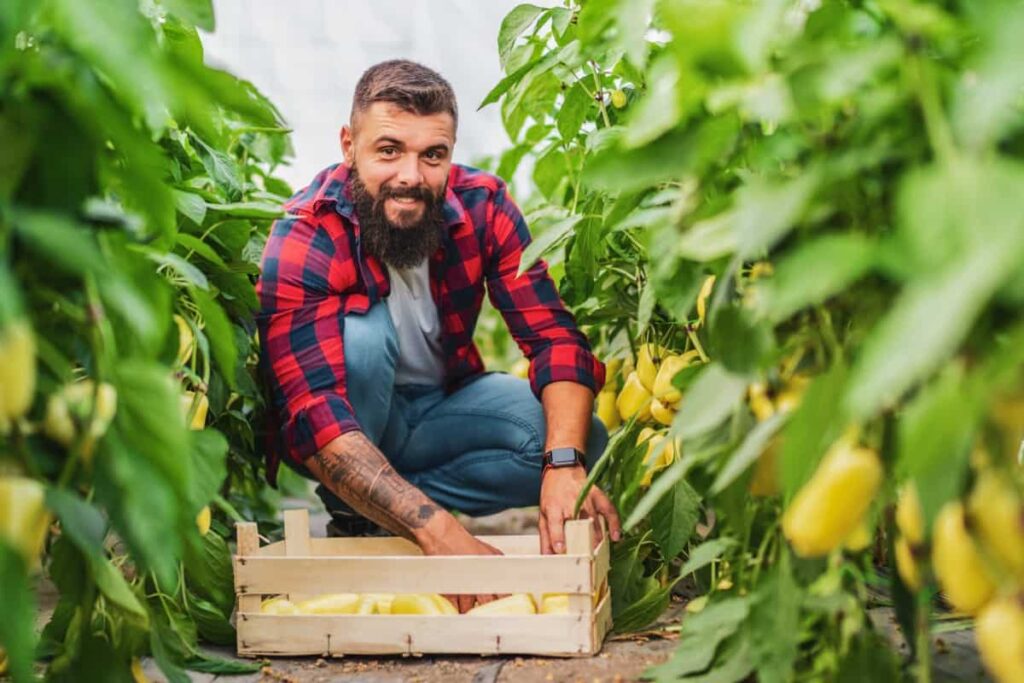
Greenhouse Automation Technologies in France
Greenhouse automation technologies have revolutionized France’s agricultural landscape by offering innovative solutions to enhance greenhouse farming efficiency, productivity, and sustainability. Climate control systems, irrigation and water management, nutrient delivery systems, robotic harvesting, and automated pest control systems are some of the key components of greenhouse automation.
Climate control systems regulate temperature, humidity, and ventilation, promoting healthier plants and higher yields. Irrigation systems ensure precise water distribution, reducing water wastage and labor costs. Nutrient delivery systems accurately administer fertilizers based on growth stages and nutritional requirements, optimizing plant health and minimizing environmental impacts.
Robotic harvesting streamlines harvesting processes, reducing labor demands and minimizing product damage. Automated pest control systems detect and manage pests without extensive pesticide use, using beneficial insects or targeted spraying methods. Data analytics and AI are crucial components of greenhouse automation, optimizing resource allocation, predicting plant health issues, and suggesting improvements for more efficient farming practices.
Adopting greenhouse automation technologies in France has increased crop yields, reduced resource wastage, and reduced labor requirements, leading to higher farmer profitability. Additionally, automation technologies contribute to making farming practices more environmentally friendly by optimizing resource usage and reducing agriculture’s environmental footprint.
Energy-efficient Practices in France Greenhouse Farming
France’s greenhouse farming industry is adopting energy-efficient practices to reduce environmental impact and operational costs. Innovative technologies and sustainable methods improve energy efficiency while maintaining high crop yields. Energy curtain systems, LED lighting, climate control automation, renewable like solar panels and wind turbines, heat recovery systems, water recycling, and thermal screens are all implemented to optimize greenhouse environments.
These practices help conserve energy, reduce heat loss, and minimize excess heat during colder periods. Additionally, heat recovery systems capture and reuse waste heat from cooling systems or exhaust air, reducing the need for additional heating during colder periods. Water recycling systems enable efficient usage within greenhouses, capturing and treating runoff water and condensation for reuse. Finally, thermal screens partition greenhouse spaces, preventing heat loss and improving energy efficiency by creating separate zones for specific crop requirements.
Government Regulations for Greenhouse Farming in France
Greenhouse farming in France is subject to strict government regulations to promote sustainable agriculture, ensure food safety, and protect the environment. Farmers must obtain environmental permits, water usage regulations, pesticide and chemical use regulations, organic certification, labor and safety standards, waste management, and quality control and traceability. Environmental permits assess the greenhouse’s impact on the ecosystem, water sources, and air quality.
In case you missed it: Guntur Red Chilli Farming Project Report: Production Cost, Market Analysis, and Cultivation Practices
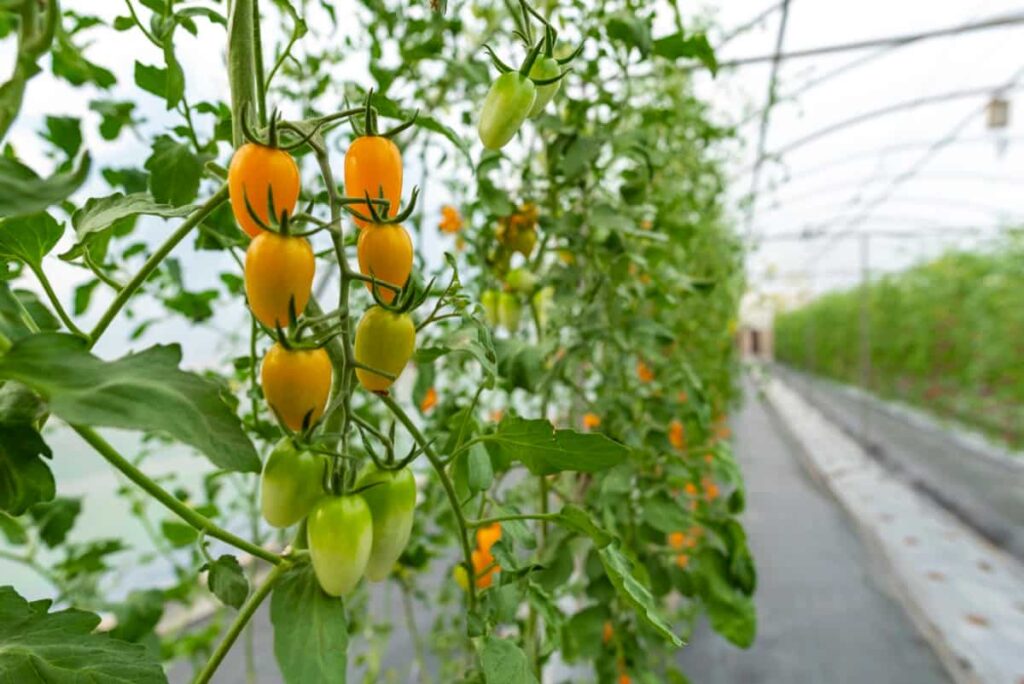
Water usage regulations encourage water-saving technologies and efficient irrigation practices. Organic certification ensures crops are grown without synthetic chemicals and follows organic farming principles. Labor and safety standards ensure workers’ well-being, while waste management ensures proper disposal of agricultural waste. Quality control and traceability ensure food safety and quality by keeping records of crop origins, handling processes, and distribution channels.
Success Stories of Greenhouse Farming in France
Hectar, an innovative agricultural venture, aims to transform French agriculture by attracting young people from diverse backgrounds and equipping them with the skills to become farmer entrepreneurs. With a shortage of farmers and an aging workforce, Hectar aims to make agriculture attractive and profitable.
The company plans to attract 2,000 young individuals annually, providing business expertise to become farmer-entrepreneurs in sustainable agriculture ventures. The goal is to make farming financially viable and appealing by offering profits and weekends off. Hectar aims to rejuvenate agriculture’s image and make it a promising career option for the younger generation.
Market Trends and Opportunities in France: Greenhouse Farming
France’s greenhouse farming sector is experiencing dynamic market trends, driven by the growing demand for fresh, locally grown produce and innovative agricultural practices. Greenhouse farms offer a reliable and sustainable produce source, reducing seasonal fluctuations and ensuring a consistent supply.
Eco-conscious consumers encourage greenhouse farmers to adopt sustainable practices, leading to higher market acceptance and premium pricing for environmentally friendly produce. Technological advancements, such as automated climate control, precision irrigation, and data-driven farming techniques, enhance productivity and optimize resource usage in greenhouse farms.
Growth opportunities include expanding specialty crops, partnering with restaurants and retail chains, exploring export markets, and investing in research and development to improve crop varieties, optimize resource efficiency, and develop eco-friendly packaging solutions. These growth opportunities provide farmers and investors numerous growth opportunities in the competitive greenhouse farming market.
In case you missed it: Vertical Strawberry Farming: A New Way to Increase Your Income and Yield
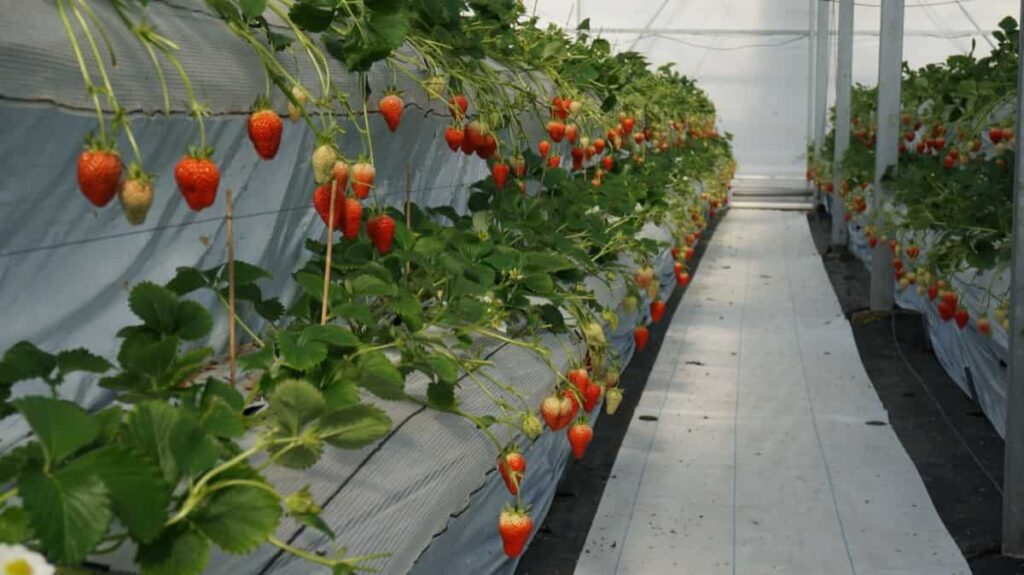
Conclusion
Greenhouse farming in France is revolutionizing agriculture, offering year-round, locally sourced produce to meet the growing demand. With advanced technology and sustainable practices, it promises a brighter and more resilient future for the country’s agricultural sector.
- Management Pests and Diseases in Your Cotton Field
- Sheep Farming Business Plan for Beginners
- Aquaponic Farming at Home: A Step-By-Step Guide
- Profitable Village Farming Business Ideas in 2024
- High-Yield Aquaculture: Fast-Growing Fish for Farming
- Effective Fish Pond Construction Techniques for Beginners
- Irrigation and Water Management in Pineapple Farming
- Blossom to Harvest: Mastering Flowering and Pollination in Papaya Farming
- Pig Fattening Essentials: From Selection to Sale for Beginners
- Raising Wagyu Cattle: A Complete Guide for Premium Beef Production
- Soil Types and Their Water Holding Capacity
- Optimizing Irrigation Schedules for Coconut Groves for Enhanced Yield
- Espresso Your Garden: Coffee Grounds for Healthier Acid-Loving Plants
- The Best Soil Mix for Snake Plants: How to Mix Your Own Snake Plant Soil
- Green Thumb Success: Expert Tips for Cultivating Greenhouse Beans All Year Round
- Bloom All Year Round: The Ultimate Guide to Indoor Hyacinth Care
- Eco-Friendly Gardening: How to Make Liquid Fertilizer from Kitchen Waste
- Ultimate Guide to Grow Anise in Pots: Explore Seed Propagation to Harvesting
- Guide to Raising Chester White Pigs: Discover Breed Facts to Growth Management
- Mastering the Elegance: The Ultimate Guide to Weeping Cherry Tree Care, Planting, and Maintenance
- Ultimate Guide to Planting Garlic in Grow Bags: Growing Strategies for Beginners
- How to Fix Spider Plant Leaf-Related Problems: Natural and Organic Remedies
- 10 Reasons Why Your Tulsi Plant is Shedding Leaves: Home Remedies and Solutions
- Optimizing Growth and Yield: The Advantages of Palm Bunch Ash Fertilizer
- Utilizing Neem Oil Extract as a Natural Pesticide for Hydrangea
- From Soil to Harvest: Various Ways in Which Farmers Can Use AI Tools
- Steps to Encourage and Induce Citrus Flowers: A Comprehensive Guide
- How to Fix Snake Plant Leaf-Related Issues: Natural and Organic Remedies
- Transform Your Garden into a Fragrant Oasis with Raat Ki Rani (Night Blooming Jasmine)
- Discover the Ideal Chicken Breeds for Philippine Farms
- How to Create a Poultry Egg Farm Business Plan for Profits
- Grow Lemon Cucumbers Like a Pro: Insider Techniques for Bountiful Yields
- Ultimate Guide to Caring for Your Pink Princess Philodendron: Tips for Thriving Variegation
- Areca Nut Profit Per Acre: Calculating Yield and Cost of Cultivation
- How Kaveri Chicken is Becoming a More Profitable Breed in Indian Backyards
- Transform Your Barn: 9 Steps to Convert a Horse Stall into a Chicken Coop
